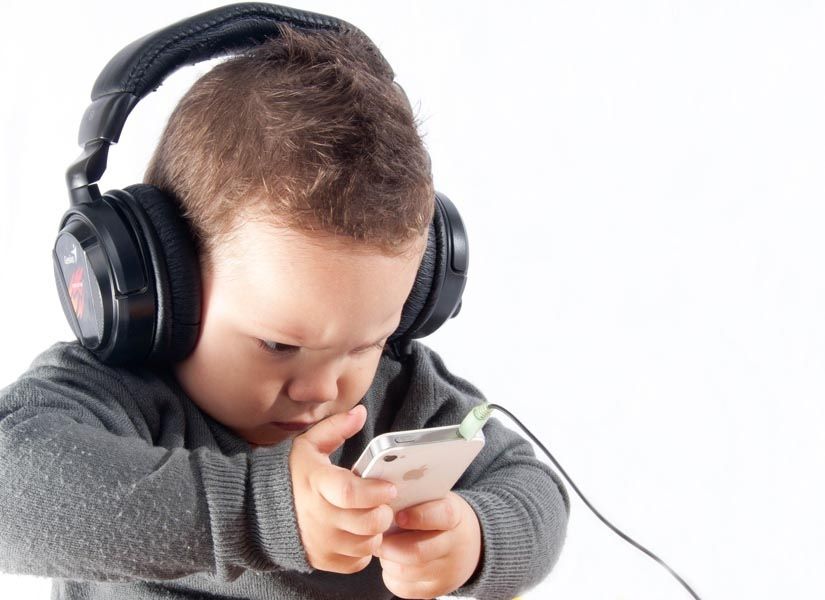What Does Slow Eye Reflex in Children Mean?

Early eye reflex testing helps detect vision abnormalities in children.
The eyes are the windows to the soul, yet many young children today experience slower eye reflexes than normal. Slow eye reflexes in children — seemingly harmless — may actually indicate potential vision or neurological problems that require early intervention. According to statistics from the World Health Organization (WHO), about 19% of children under the age of 10 show signs of accommodative or visual reflex disorders, which can affect their learning and development.
The eye reflex is a natural mechanism that helps the eyes respond to external stimuli such as light, motion, or environmental changes. When the reflex is slow, it means the eyes take longer to react — for example, when exposed to bright light, the pupils contract later than usual, or when following moving objects, the eyes lag behind.
This condition can make children appear tired, unfocused, and less observant, and may be an early warning sign of vision-related disorders that need attention.
Causes of Slow Eye Reflex in Children
There are various causes of this condition, ranging from genetic factors to daily lifestyle habits.
Congenital or Genetic Causes:
Children may inherit vision problems from their parents, especially if someone in the family has severe myopia, strabismus, or congenital low vision. Research by the American Academy of Ophthalmology found that children with one or both parents having significant refractive errors are 2.3 times more likely to experience reflex abnormalities than those without family history.
Lack of Sleep and Irregular Routines:

Excessive screen time can slow down children’s eye reflexes.
Insufficient sleep can strain the visual nervous system, making the eyes less responsive. School-age children need an average of 9–11 hours of sleep per night; prolonged sleep deprivation leads to eye fatigue and slower reaction times.
Overuse of Electronic Devices:
According to the Vietnam Ministry of Health (2024), more than 65% of children aged 6–12 spend over 3 hours per day using phones or tablets. Blue light from screens suppresses visual nerve activity, leading to dryness, eye strain, and slower reflexes. In children with weak corneas or accommodation issues, this problem is even more pronounced.
Environmental Factors:
Exposure to harmful elements such as cigarette smoke, strong light, dust, or harsh cleaning chemicals can irritate the eyes, reducing focus and sensitivity.
Side Effects of Medication:
Certain drugs — such as antibiotics, steroids, or blood pressure medications — may affect the eye’s reflex mechanism. Additionally, residual effects after eye surgeries may temporarily slow reflex responses.
How Slow Eye Reflexes Affect Children
Slow eye reflexes not only limit a child’s ability to observe but also affect cognitive and motor development. When the eyes fail to respond quickly to surrounding stimuli, children may:
- Struggle to track moving objects, leading to frequent bumps or falls while playing.
- Have trouble distinguishing colors or shapes quickly.
- Perform poorly in tasks requiring hand-eye coordination.
- Appear dull or fatigued, affecting facial expression and liveliness.
A 2023 study from the University of Tokyo found that children with delayed visual reflexes had up to 20% lower concentration levels compared to their peers.
Early Signs of Slow Eye Reflex in Children

Regular eye exams help children maintain healthy eyes and quick reflexes.
Parents can detect this condition through some common signs:
- Eyes appear sluggish, blink infrequently, or respond slowly to light changes.
- When called or shown an object up close, the child’s eyes move slowly or inconsistently.
- Frequent eye rubbing, squinting, or complaints of eye fatigue.
- Difficulty focusing during lessons or losing attention easily when reading.
- Clumsiness or poor spatial awareness when walking or playing.
If these symptoms persist for more than two weeks, it’s advisable to visit an ophthalmologist for pupil reflex, vision, and neurological evaluation.
How to Prevent and Improve Slow Eye Reflexes in Children
- Schedule routine eye exams every six months to detect abnormalities early. This includes checking pupil reflexes, accommodation, and binocular vision.
- Limit screen time to under two hours daily and follow the 20-20-20 rule: after 20 minutes of near focus, let the eyes rest for 20 seconds by looking 20 feet (about 6 meters) away.
- Maintain a diet rich in vitamin A, E, lutein, zeaxanthin, and Omega-3 to support optic nerve function. Include foods like salmon, eggs, carrots, spinach, oranges, papaya, and nuts.
- Protect the eyes from smoke, dust, and harsh light. Encourage children to wear UV-protective glasses when outdoors.
- Encourage visual and reflex-stimulating activities such as catching balls, puzzles, or reading moving text. These help coordinate the brain and eye more effectively.
- Ensure proper rest with adequate sleep; avoid late-night studying or reading under poor lighting, as it can weaken the pupil reflex.
When to See a Doctor
If a child’s eyes do not respond to light, show poor pupil contraction, or exhibit symptoms like blurred vision, head tilting, or strabismus, parents should seek medical attention immediately. The period between ages 1–6 is crucial for visual development — late intervention may cause permanent visual reflex deficiencies, hindering learning and spatial awareness in the long term.
Slow eye reflexes in children can signal underlying eye or neurological disorders. Early detection and proper care significantly enhance response speed and visual performance. Parents should create healthy living conditions, provide balanced nutrition, and, most importantly, maintain regular eye check-ups to safeguard their child’s “windows to the soul” from an early age.

 vi
vi 29-Oct-2025
29-Oct-2025










 0916.741.763
0916.741.763 Appointment
Appointment